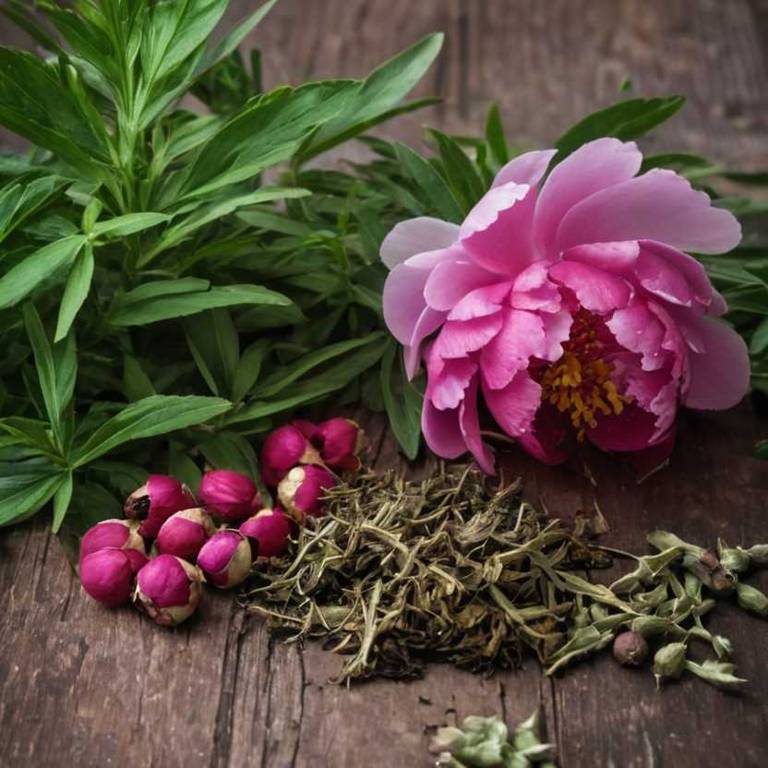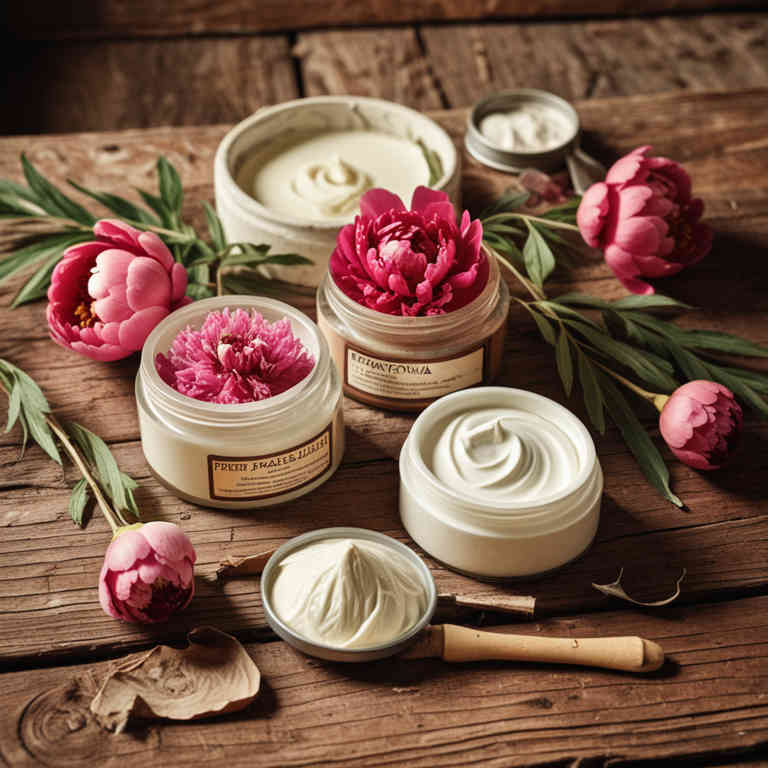10 Best Paeonia Officinalis Preparations

The best medicinal preparations of Paeonia officinalis are decoctions, teas, tinctures, creams, and mucillages, each offering unique benefits for various health conditions.
Decoctions involve boiling the root to extract its active compounds, while teas are made by steeping the dried root in hot water.
Tinctures provide a concentrated form of the herb, often used for quick absorption.
Creams and mucillages are applied topically to soothe skin irritations and promote healing.
These preparations have been traditionally used to address inflammation, pain, and digestive issues.
Below there's a list of the 10 best herbal preparations of paeonia officinalis for medicinal purposes.
- 1. Decoctions
- 2. Teas
- 3. Tinctures
- 4. Creams
- 5. Mucillages
- 6. Capsules
- 7. Oinments
- 8. Oils
- 9. Syrups
- 10. Lozenges
1. Decoctions
Paeonia officinalis decoctions is commonly used to treat conditions such as inflammation, pain, and hormonal imbalances due to its traditional medicinal properties.
These decoctions are often employed in the management of menstrual disorders, menopausal symptoms, and joint pain. The most common ailments treated include dysmenorrhea, osteoarthritis, and inflammatory skin conditions. The bioactive constituents responsible for these effects include alkaloids, flavonoids, and essential oils, which exhibit anti-inflammatory, analgesic, and antioxidant properties.
Additionally, the presence of paeoniflorin contributes to its ability to modulate the nervous system and reduce stress-related symptoms.

2. Teas
Paeonia officinalis teas is commonly used to treat a variety of ailments, including menstrual disorders, menopausal symptoms, and digestive issues.
This herbal preparation is widely recognized for its calming and anti-inflammatory properties, making it a popular remedy for stress, anxiety, and insomnia. It is also used to alleviate pain, particularly in cases of headaches and muscle aches. The bioactive constituents responsible for these effects include flavonoids, alkaloids, and essential oils, which contribute to its antioxidant, anti-inflammatory, and sedative actions.
Additionally, paeonia officinalis contains paeoniflorin, a compound known for its analgesic and neuroprotective benefits.

3. Tinctures
Paeonia officinalis tinctures is commonly used to treat a variety of ailments, including inflammation, pain, and menstrual disorders.
These tinctures are often employed in traditional medicine to alleviate symptoms of arthritis, menstrual cramps, and digestive issues. The bioactive constituents responsible for these medicinal effects include alkaloids, flavonoids, and essential oils, which possess anti-inflammatory, analgesic, and antispasmodic properties. Additionally, the presence of paeoniflorin, a key glycoside, contributes to its therapeutic benefits.
This herbal preparation is valued for its ability to support overall wellness and address specific health concerns through natural means.

4. Creams
Paeonia officinalis creams is commonly used to treat inflammatory conditions, skin disorders, and joint pain.
These creams are often applied topically to alleviate symptoms of eczema, psoriasis, and arthritis due to their anti-inflammatory and analgesic properties. The most common medicinal uses include reducing swelling, soothing irritated skin, and providing relief from muscle and joint pain. The bioactive constituents responsible for these effects include essential oils, flavonoids, alkaloids, and tannins, which possess anti-inflammatory, antioxidant, and antimicrobial activities.
These compounds work synergistically to enhance the therapeutic benefits of the herbal preparation.

5. Mucillages
Paeonia officinalis mucillages is commonly used to treat digestive disorders, inflammation, and skin conditions due to its soothing and healing properties.
The most common medicinal uses include alleviating symptoms of gastritis, ulcers, and inflammatory bowel diseases, as well as promoting wound healing and reducing skin irritations. The bioactive constituents responsible for these effects include mucilage polysaccharides, flavonoids, alkaloids, and tannins, which exhibit anti-inflammatory, antimicrobial, and antioxidant activities. These compounds help to protect the mucous membranes, reduce irritation, and support tissue repair.
Overall, the mucillages of Paeonia officinalis are valued for their ability to soothe and heal various internal and external ailments.

6. Capsules
Paeonia officinalis capsules is commonly used to treat a variety of health conditions, including inflammation, menstrual disorders, and cardiovascular issues.
These capsules are widely utilized for their ability to alleviate symptoms of menopause, such as hot flashes and mood swings, as well as for their anti-inflammatory and analgesic effects. The most common medicinal uses include managing pain, reducing inflammation, and supporting women's reproductive health. Bioactive constituents such as paeoniflorin, benzoylpaeoniflorin, and flavonoids are responsible for the plant's therapeutic properties.
These compounds exhibit antioxidant, anti-inflammatory, and neuroprotective activities, contributing to the overall efficacy of the herbal preparation.

7. Oinments
Paeonia officinalis oinments is commonly used to treat inflammatory conditions, muscle pain, and skin disorders due to their soothing and anti-inflammatory properties.
These oinments are frequently applied topically to alleviate symptoms of arthritis, rheumatism, and muscular aches. They are also used for their calming effects on the skin, helping with eczema and minor wounds. The bioactive constituents responsible for these medicinal properties include essential oils, alkaloids, and flavonoids, which possess anti-inflammatory, analgesic, and antimicrobial effects.
Additionally, the presence of paeoniflorin contributes to the plant's ability to reduce pain and inflammation.

8. Oils
Paeonia officinalis oils is commonly used to treat inflammation, pain, and skin conditions due to their soothing and anti-inflammatory properties.
These oils are often applied topically to alleviate symptoms of arthritis, muscle pain, and dermatological issues such as eczema and psoriasis. The most common medicinal uses include reducing joint inflammation, easing menstrual cramps, and promoting skin health. The bioactive constituents responsible for these effects include alkaloids, flavonoids, and essential fatty acids, which exhibit anti-inflammatory, analgesic, and antioxidant activities.
Additionally, some studies suggest that these oils may support cardiovascular health by improving blood circulation.

9. Syrups
Paeonia officinalis syrups is commonly used to alleviate symptoms of respiratory conditions, such as coughs and bronchitis, as well as to soothe digestive issues like indigestion and stomach discomfort.
These syrups are also traditionally used to reduce fever and ease menstrual cramps. The most common medicinal uses include treating respiratory infections, digestive disorders, and inflammatory conditions. The bioactive constituents responsible for these effects include alkaloids, glycosides, and essential oils, which possess anti-inflammatory, antispasmodic, and expectorant properties.
These compounds work together to provide the therapeutic benefits associated with Paeonia officinalis syrups.

10. Lozenges
Paeonia officinalis lozenges is commonly used to alleviate symptoms of respiratory conditions such as coughs, sore throats, and inflammation of the upper respiratory tract.
These lozenges are also used to reduce fever and ease symptoms of colds and flu. The most common medicinal uses include treating respiratory infections, inflammation, and as a mild sedative for stress and insomnia. The bioactive constituents responsible for these effects include alkaloids, flavonoids, tannins, and essential oils, which possess anti-inflammatory, antimicrobial, and analgesic properties.
These compounds work synergistically to provide therapeutic benefits in the treatment of various ailments.
